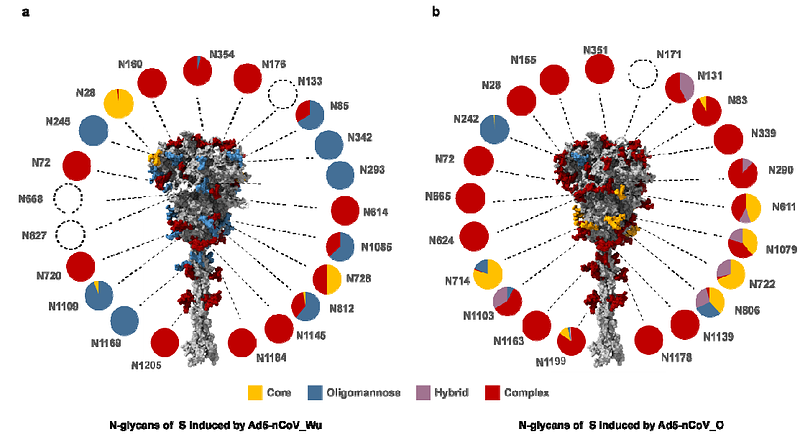Molecular basis of Ad5-nCoV Vaccine-Induced Immunogenicity

Molecular basis of Ad5-nCoV Vaccine-Induced Immunogenicity
Dong, D.; Song, Y.; Wu, S.; Wu, B.; Peng, C.; Kong, W.; Zhang, Z.; Hou, L.; Li, S.
AbstractIn response to coronavirus disease 2019 (COVID-19), numerous vaccines have been developed to protect against SARS-CoV-2 infection. Ad5-nCoV (Convidecia) is a vaccine listed for emergency use by the WHO and has been administrated to millions of people globally. It comprises a series of human adenovirus 5 (Ad5) replication-incompetent vectored vaccines that transduce the spike protein (S) gene of various SARS-CoV-2 strains. Despite promising clinical data demonstrating its safety and effectiveness, the underlying molecular mechanism of its high immunogenicity and incidence of adverse reactions remains less understood. Here we combined cryo-ET, fluorescence microscopy and mass spectrometry to characterize the in situ structures, density and site-specific glycan compositions of the Ad5-nCoV_Wu and Ad5-nCoV_O vaccine-induced S antigens, which encode the unmodified SARS-CoV-2 Wuhan-Hu-1 S gene and optimized Omicron S gene, respectively. We found that the vaccine-induced S are structurally intact, antigenic and densely distributed on the cell membrane. Compared to Ad5-nCoV_Wu induced S, the Ad5-nCoV_O induced S demonstrate significantly better stability and is less likely to induce syncytia among inoculated cells. Our work demonstrated that Ad5-nCoV is a prominent platform for antigen induction and cryo-ET can be a useful technique for vaccine characterization and development.


